How to ride Local trains in Japan
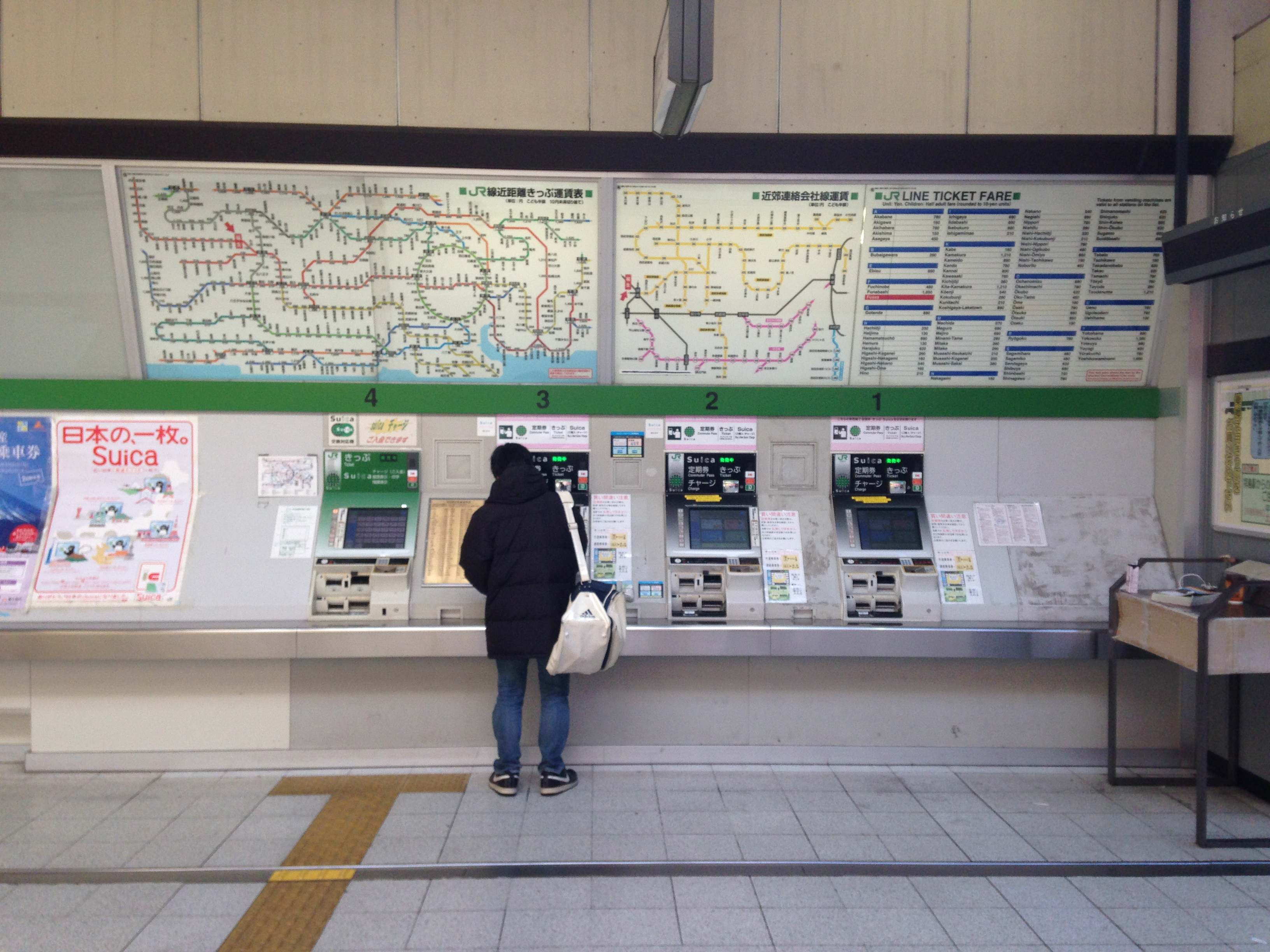
When you arrive at a train station, you’ll see the ticket center. It will often have a large map overhead that has all the train stops in Japanese Kanji. The red arrow indicates where you are and the numbers indicate how much it will cost to travel to each train station.
However, unless your Japanese is proficient, you’ll want to find the much smaller English version. Compare the colors and rail lines to the above Japanese version and figure out how much it will cost to travel to your destination. For me to take the train from Fussa to Shinjuku it costs 620 yen.
Next, go to the ticket machine and select English. It will display a list of fares – select the one that you need and insert money into the vending machine. It takes 0.10, 0.50, 100, and 500 coins then also 1000, and 5000 yen bills.
If you can’t figure out the station names or how much it will cost, purchase the cheapest ticket available. You can pay the difference at a fare adjustment machine once you reach your destination.
Pass through into the paid-fare zone, inserting your ticket into the gates. Pick it up on the other side and be sure to keep your ticket – you’ll need it to exit the station.
Locate which line you want and in which direction. Head down to the tracks, being sure to stay towards the left on stairs and escalators.
Wait at the colored labels on the platform indicating where the doors will be located. Follow what the Japanese do and make a nice orderly line. Note, on some lines specific cars are reserved just for women.
On the train, you’ll notice it’s pretty quiet. People keep their voices low and talking on a cell phone is not allowed. No food or drinks allowed. If you avoid eye contact and keep your head down, you’ll fit right in.
Once you reach your destination, take your fare ticket and insert it into the machine. The machine will keep it.
Another option is to use a Suica card, a reloadable plastic card that contains a chip. You can add more money to it at any time and it has a refundable deposit of 500 yen (although it would make a good memento). Also, be sure to register it when you buy one (done through the ticket machine). That way it can be replaced if it’s lost. You type in your name and phone number, but your last name won’t fit if it has 12 letters like mine.
That’s about it. It’s straightforward, but takes some figuring out the first time. Trains are almost always on time and are clean. I’ve never seen any graffiti, even on the more remote lines. I haven’t ridden the bullet train yet, so I’ll make a separate post when I do.
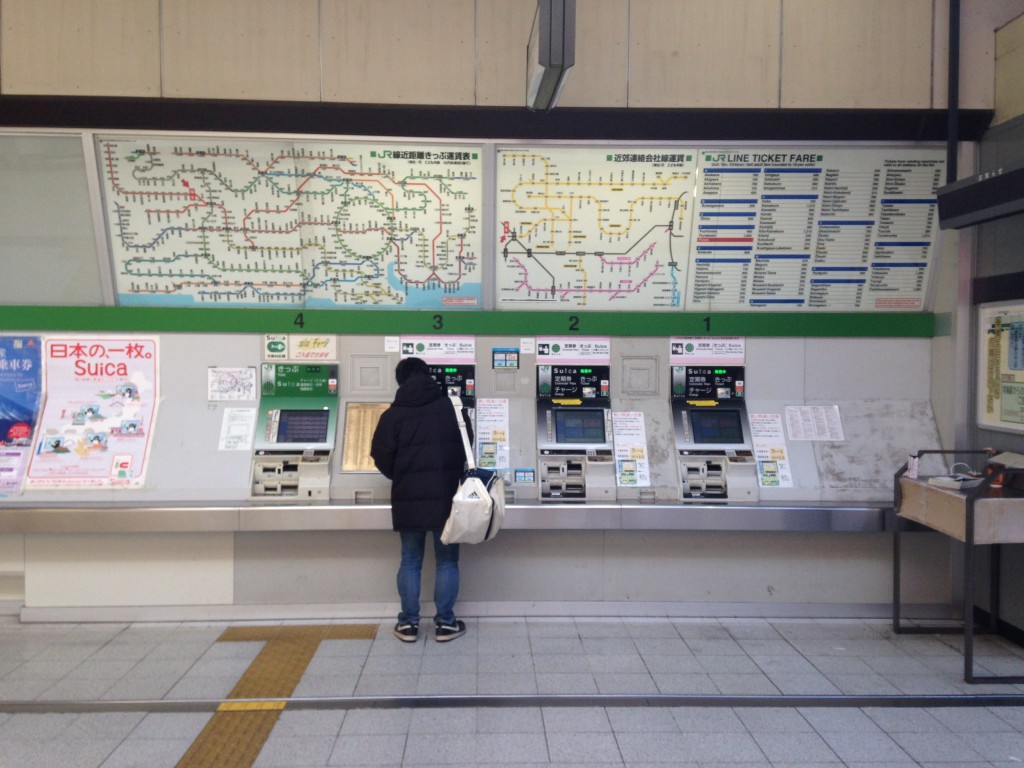

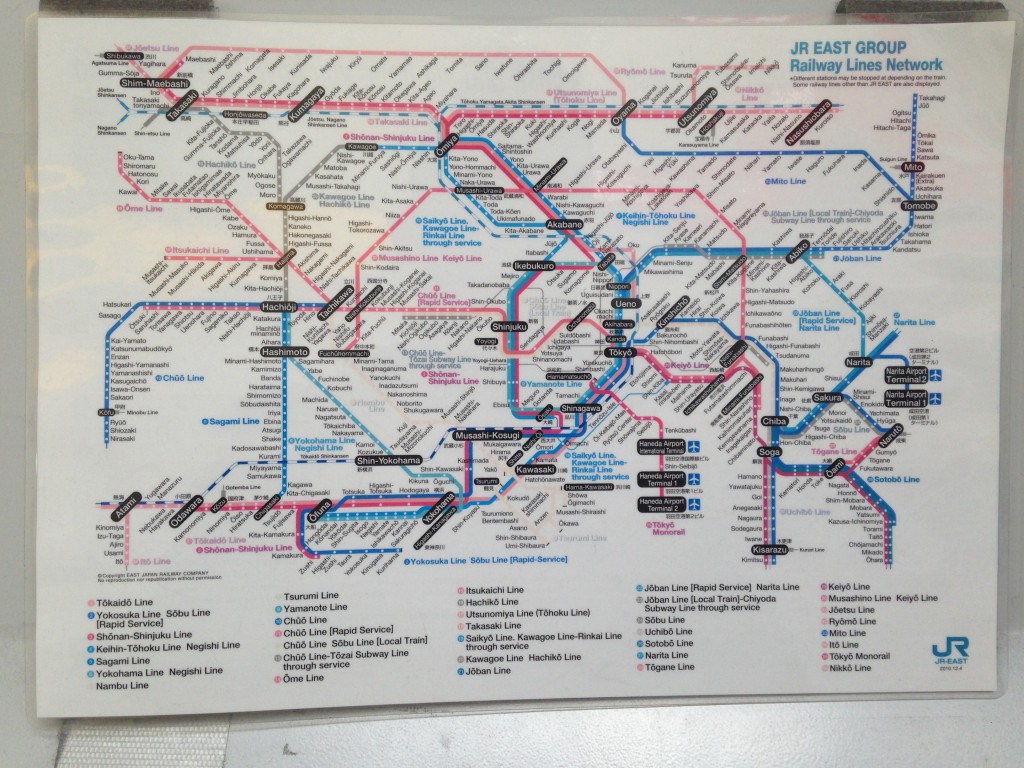

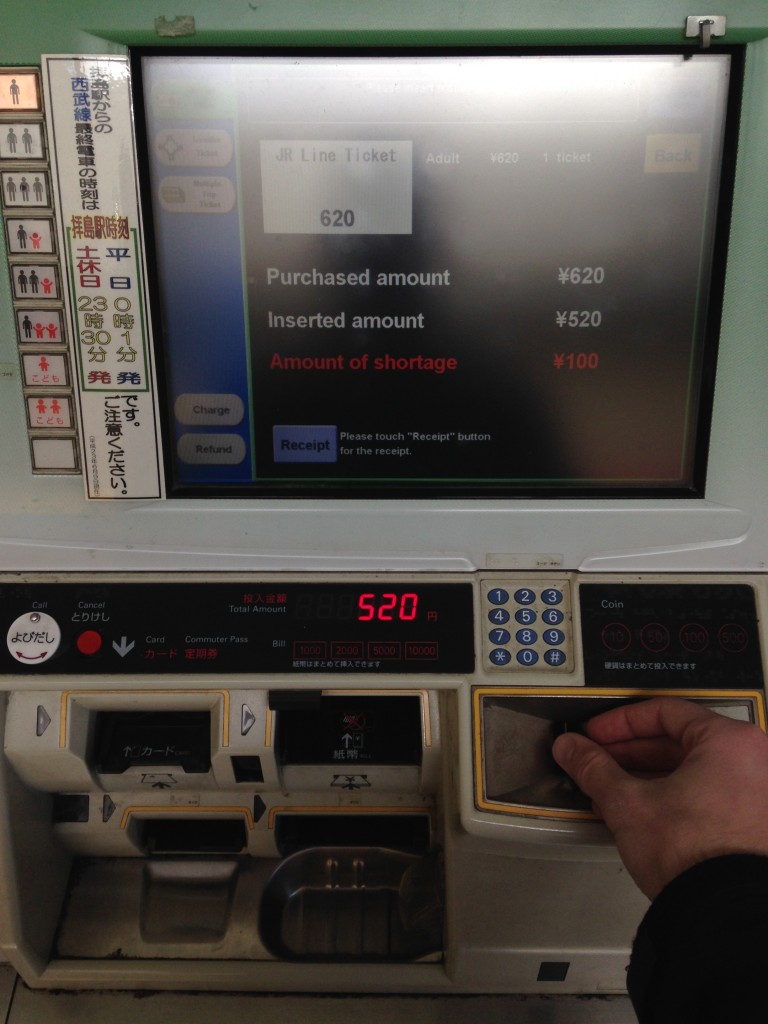
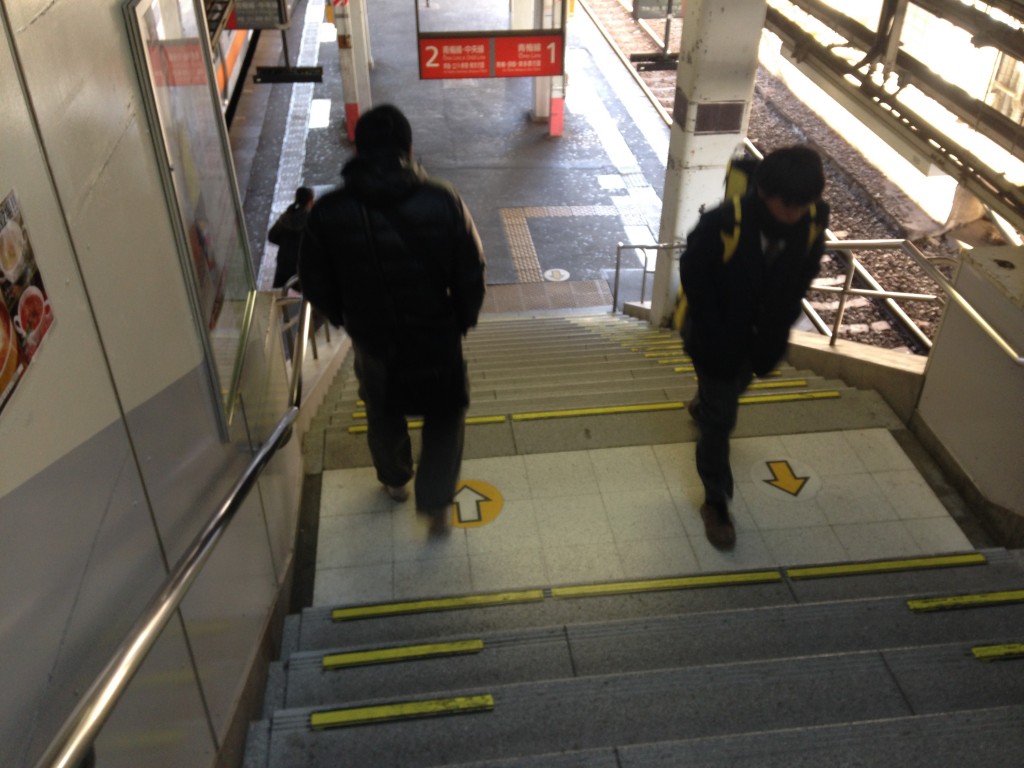
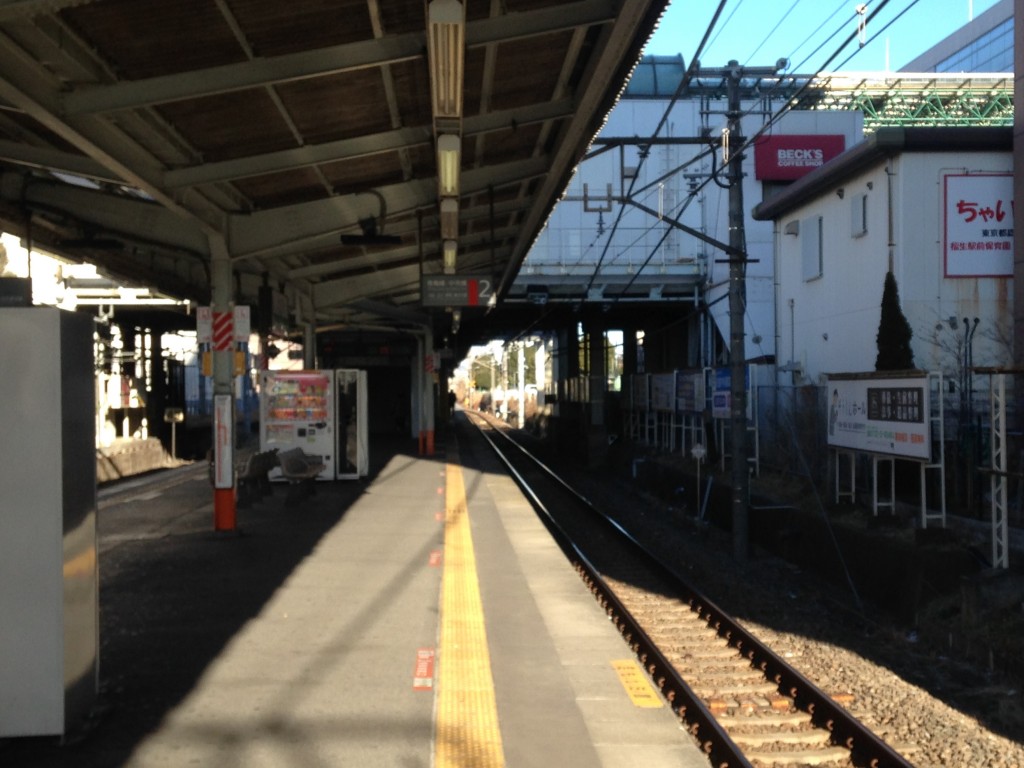
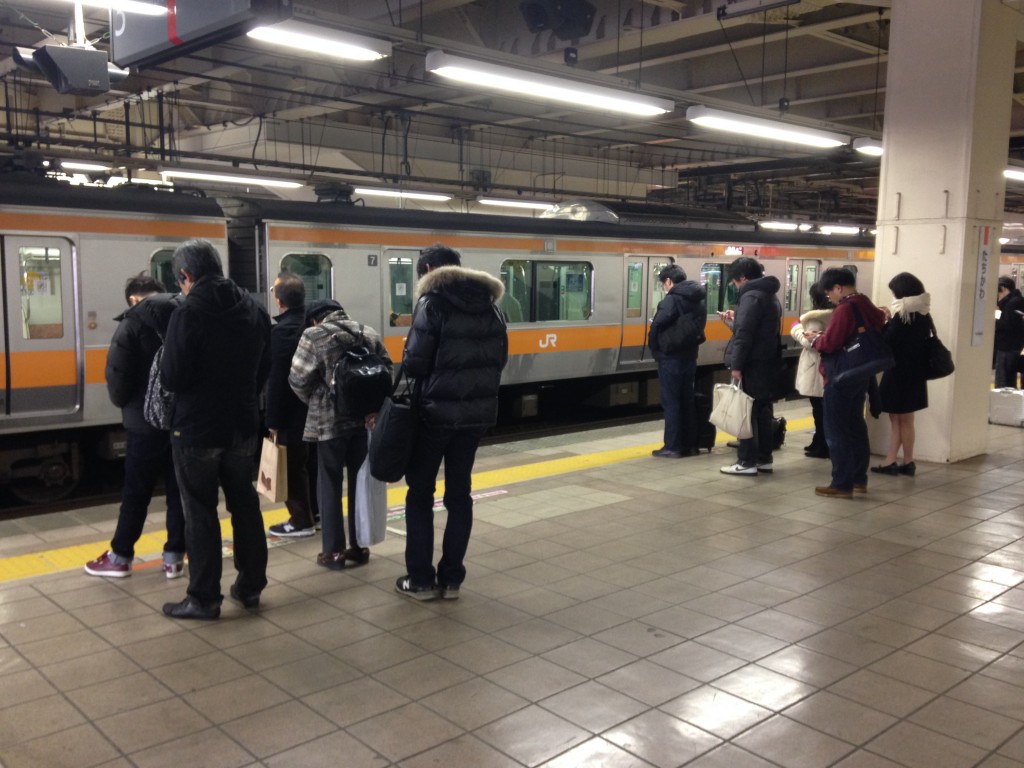

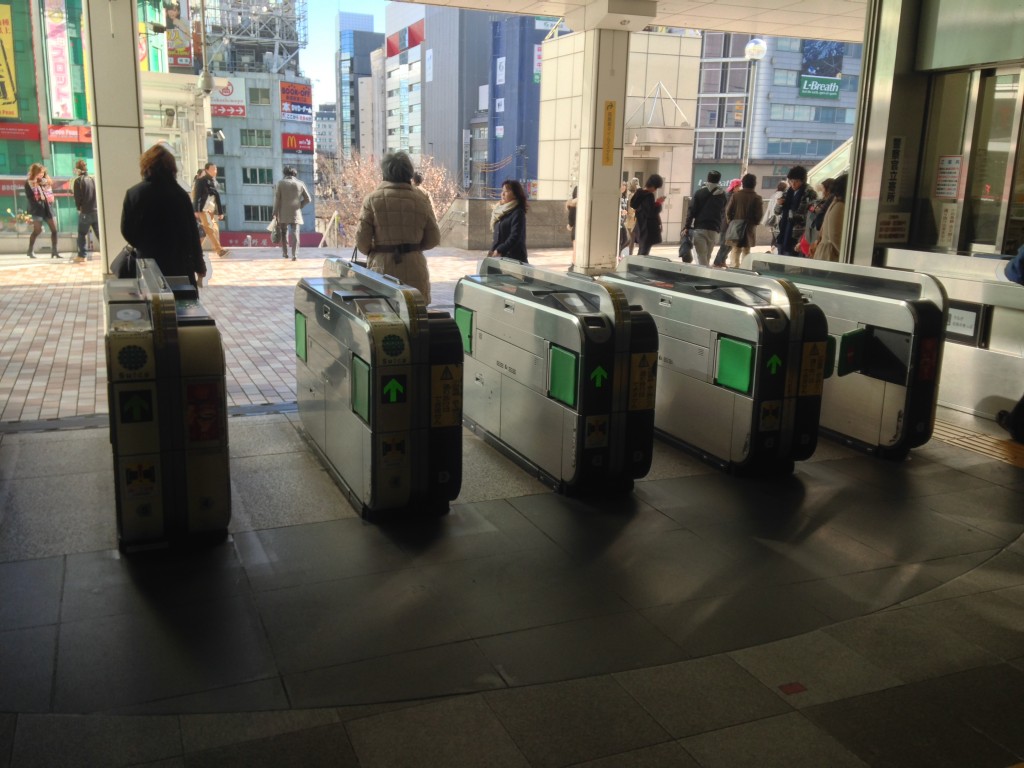
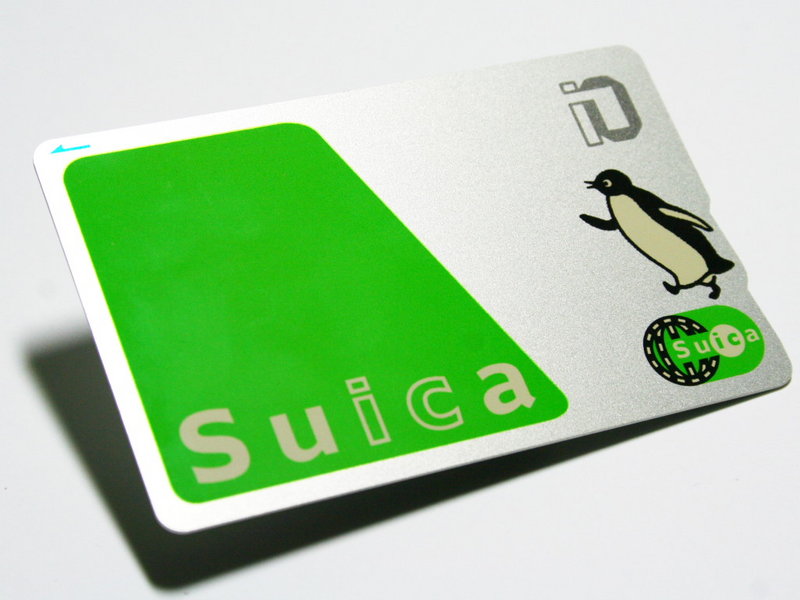
Traveling vicariously through you Mark. Trains process seems very similar to DC metros (minus the cell phone calls).Enjoying the posts, be safe. – UBob